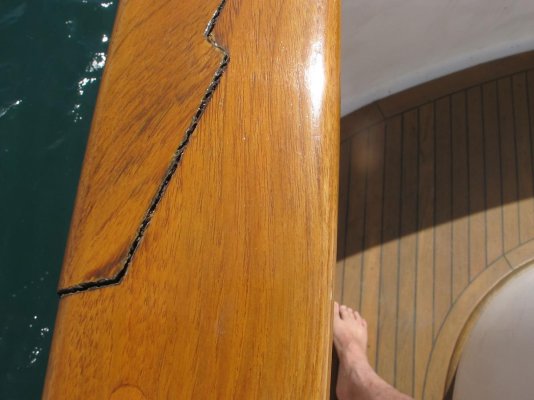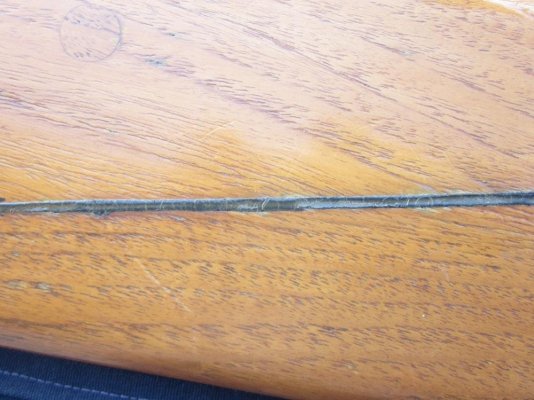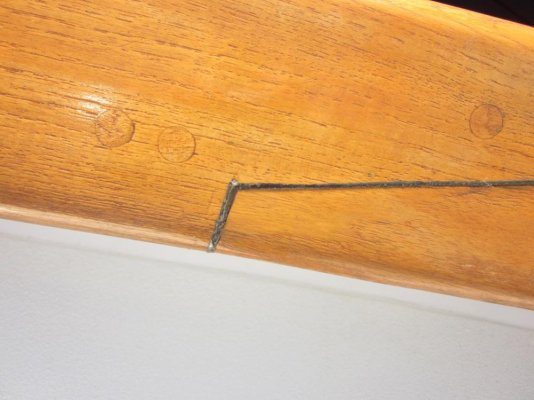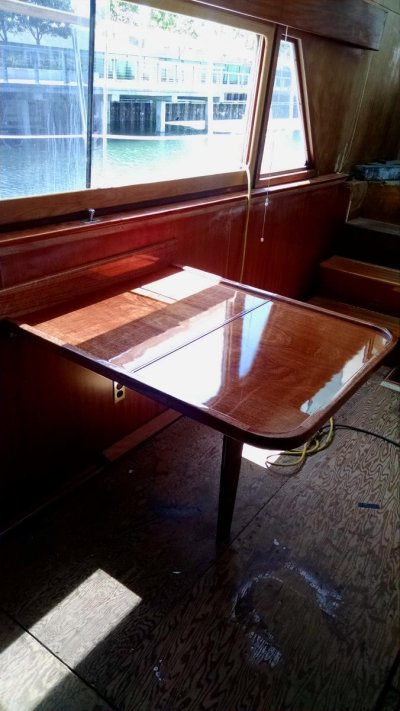Aquabelle--- Here is what I do, which I learned from the former owner of Oak Harbor Boatworks, who founded the Grand Banks owners forum.
On bare wood (CPES does nothing over existing finish), I put on one or two coats of CPES, making sure it penetrates as well as it can. As you have observed in your project, this raises the grain and gives a rough-ish surface.
After letting the first CPES treatment cure, I then give the wood a very light finish sanding, just enough to knock down the raised grain. I then put another coat of CPES on.
While this coat is still good and tacky I put on the first coat of finish. We have been using Bristol on the exterior teak on our boat for the last 14 years. Ideally, if the weather and my schedule cooperate, we try to get at least eight coats onto the wood.
So even though the final coat of CPES might raise the grain a bit again, it becomes a non-issue as the coats of finish build up, particulalry in the way we apply the finish coats.
We try to put on three coats of Bristol the first day. We let them cure for a few days, then give it a light finish sanding. We then put on three more coats of Bristol, let them cure, do the final finish sanding to get the surface as smooth as possible, and then apply the final finish coat taking care to get it as smooth as possible in its application.
Unfortuately, being in the rainy, misty Pacific Northwest, my schedule and good weather rarely align to allow us to do a proper finish job. So we put on what we can, and keep the covers on all the time to keep the deterioration rate down until the day comes (in a couple of years) when we will have the time to do a proper job on all the external teak on the boat, which will include removing and rebedding all of it.
When we have been able to get eight or ten coats of Bristol on a piece, we've found that it's good for seven or eight years or sometimes even more in the weather, and longer if we keep covers on the wood when we're not using the boat (or if we're simpy too lazy to take them off when we are using the boat

)
We try to put a refresher coat on every four years or so unless the weathering requires a piece to be done sooner.
Everyone has their own favorite way of applying finishes to wood, and there's nothing that says the way we do it is the best way. It's the way we were taught by one of the most experienced GB folks on the planet, so we've stuck to it.





![IMG_5706[1].jpg](/data/attachments/31/31137-1901ce6af57812465efa9889fd36f741.jpg)
